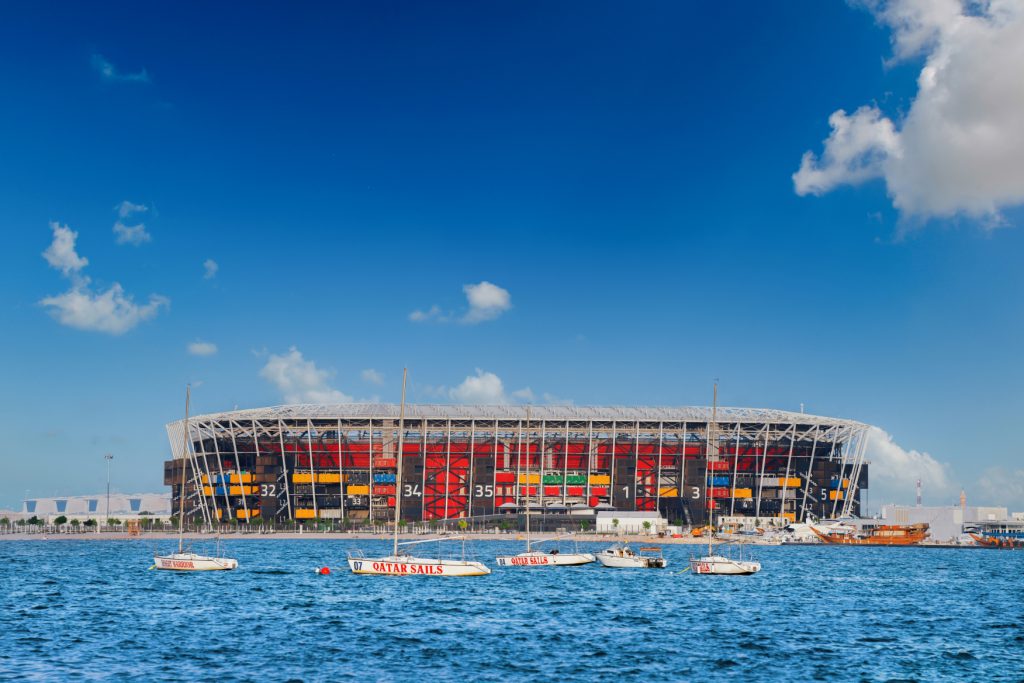Longevity, influence and the social media trap: Who do we trust with our health?
In a world where six-pack abs are flaunted more than six-point health plans, who are we really trusting […]

When you think of a stadium, your mind probably wanders through Wembley in London, the Stade de France in Paris, the lovely Maracana in Brazil, or the state-of-the-art Fussball Arena in Munich. All of them are architectural marvels, iconic stadiums that any football fan can pinpoint from a picture or glimpse on a video frame.
That does not mean that other stadiums do not have their legacy or cannot write it at a major tournament like the FIFA World Cup. Of course, Qatar did not have the infrastructure prior to the competition but have made a superb job in delivering seven brand-new stadiums and renovating another one before the start of the world football flagship tournament.
But none of the eight has been talked about so much and praised for its architectural innovations than the “Stadium 974”, the most exciting concept ever-seen at the FIFA World Cup, a true story of Qatari success, which has captured the minds and eyes of all fans present in the Middle East country or watching the tournament on TV.
What is the catch with this stadium? Well, it simply made history even before hosting the first match, Mexico vs Poland, in the group phase at Qatar 2022, through the idea and its construction, underlining the idea of sustainability at the 2022 FIFA World Cup. Constructed entirely from shipping containers and modular steel, it is the first fully demountable covered football stadium – showing Qatar’s commitment to cost-effective sustainability and daring design.
Yes, you read that right, Stadium 974 is definitely a forward-thinking, innovative arena, which pays tribute to Qatar’s long-standing tradition of seafaring and worldwide trade. And it also has plenty of symbolism, starting from its name, which represents Qatar’s international dialing code, but also going to the exact number of shipping containers used to build the stadium from scratch.
Located on a 450,000-square-metre (4.8-million-square-foot) waterfront site just southeast of Doha, at only one kilometre away from the Hamad International Airport, the 40,000-seat stadium was broken down into a series of modular blocks, modified shipping containers that echo the language of the nearby port. The containers were altered to contain the various fundamental stadium program elements, including stairs, concessions, and bathrooms.
Even the locker rooms where the players will be preparing for the games are made entirely from shipping containers, offering a unique experience both for them and for the staff, with state-of-the-art facilities ready to cater to any needs.
“This venue offers the perfect legacy, capable of being reassembled in a new location in its entirety or built into numerous small sports and cultural venues All of this in a stadium that delivers the atmosphere fans expect at a World Cup and which we will build in a more sustainable way than ever before. I’m delighted with this design and confident that Ras Abu Aboud will become a blueprint for future mega-event planners to follow,” said H.E. Hassan Al Thawadi, Secretary General of the Supreme Committee for Delivery & Legacy.
This is also the first-ever FIFA complaint stadium that can be fully dismantled and re-purposed post-event, including flexibility in the design to rebuild the stadium with the same capacity in a different location or build multiple smaller venues using the same materials.
Stadium 974 received a 5-star rating from the Global Sustainability Assessment System (GSAS) for both its design and construction. Air quality was also a key focus in the design. Extensive, advanced building physics testing was undergone to examine the performance of the naturally ventilated bowl and the performance of the containers under tournament and pre-tournament climate conditions. Using computer modeling techniques, CO2 levels, air speeds, and air quality were measured at both precinct and stadia levels.
With sustainability in mind when it was built, the stadium bowl seating avoids the need for air conditioning as it is designed to be naturally ventilated. The overall stadium steel structure can be recycled and reused post-tournament, based on any legacy option that is selected. The stadium’s water efficiency methods ensure it reduces water use by 40% compared to a conventional stadium development.
“Sustainability has been the primary focal point with Stadium 974. To receive top GSAS certification marks from GORD is further confirmation of our efforts to establish new, sustainable concepts of stadium design and construction that we hope will be adopted worldwide. Stadium 974 is also a proud example of the legacy we intend to leave from Qatar’s hosting of the FIFA World Cup,” added Ghanim Al Kuwari, Deputy Director General, Technical Services of the Supreme Committee for Delivery & Legacy.
The other catch for Stadium 974? Well, after hosting seven games at the 2022 FIFA World Cup, the containers and super-structure of the arena will be reused. A waterfront development boasting fabulous facilities for the local community will spring to life, as well as a dynamic hub for business. This new concept in venue development ensures that while Stadium 974’s physical presence may be temporary, its legacy will be everlasting.

In a world where six-pack abs are flaunted more than six-point health plans, who are we really trusting […]

In the era of social media, post-COVID, and with mental health at the forefront, a shift is taking […]